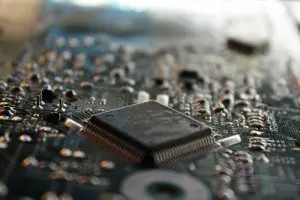You know the drill: Design a circuit board, use it in a device, and then it’s onto the next one. The old board gets shelved. But there’s untapped potential in these silent shelves of circuitry. Every unused PCB assembly is a chance to save money and reduce environmental impact. Below we’ll highlight concrete ways to repurpose those PCBs gathering dust in your workspace.

(beear/Pixabay)
1. Design Custom Breakout Boards
A PCB from an old router, for example, can be cut down into smaller pieces to make breakout boards for hobbyist electronics projects. These can then be used for quick prototyping with microcontrollers, like an Arduino, allowing for rapid testing of new ideas without the need for a full PCB design cycle.
2. Harvest Components for Reuse
Open up any old device and you’ll likely find a PCB inside. Instead of discarding it, salvage useful parts. For instance, remove LEDs from an old game console’s PCB to use in a DIY light project. Capacitors, resistors, and connectors can all find new life in future circuits. This not only saves money but also reduces the environmental impact of manufacturing new components.
3. Turn PCBs into Educational Kits
Schools and hobbyists often need inexpensive materials for learning. An old computer motherboard, for instance, can become a practice ground for soldering or a demonstration model for computer science classes. By converting outdated PCBs into educational resources, you’re contributing to the growth of technical literacy.
4. Create Artistic Pieces from Circuitry
PCBs’ patterns resemble a mini cityscape. Artists and DIY enthusiasts can transform these green boards into jewelry, coasters, or even mosaic wall art. Imagine a piece of jewelry made from a smartphone’s PCB, combining technology with fashion in a wearable statement.
5. Recover and Sell Precarious Metals
For PCBs that are beyond repair, extract valuable metals such as gold from the connectors or silver from other components. These can be sold to refineries or hobbyists. A gold-plated CPU processor, for example, contains a small amount of gold that can be recovered and reused.
6. Construct Custom Electronic Housings
An old PCB can become the body of a new device. Cut to size and shape, it can be repurposed to house a handmade clock or a custom gaming device. It’s durable, distinctive, and it adds an industrial edge to the end product.
7. Upcycle into Furniture and Home Décor
The rigid structure of PCBs makes them excellent for upcycling into unique home décor. For instance, a series of old laptop motherboards can become the surface of a modern, tech-themed coffee table, or even be mounted as artwork in a tech company’s lobby.
8. Initiate a Take-back Program
Encourage your local community to give you their old electronics. This can supply you with a steady stream of materials for your projects. For example, set up a collection bin at a local school or community center and use the gathered PCBs to create any of the above projects.
9. Contribute to Open Source Projects
Donate your PCBs to open-source hardware projects seeking specific parts. Your old game console’s board could be the missing piece for someone’s open-source computing project, advancing collaborative technology development.
10. Power a Robotics Kit
Robotics hobbyists can use motors, gears, and circuits from old PCBs to assemble a kit. Think of a small robot built from an old printer’s circuitry — it’s a practical way to upcycle while indulging in robotics.
11. Engage in Component Swapping
Organize or participate in component swapping events where enthusiasts exchange parts and ideas. A PCB from an old microwave, for instance, might have a relay that another person needs for their custom home automation project.
12. Offer to Makerspaces
Makerspaces thrive on donations of useful parts. Your old PCBs could become a treasure trove for someone else’s project. For instance, a disused gaming console’s PCB might contain motors or switches that a hobbyist could use in a robotics project.
13. Use as Templates for Workshops
Old PCBs can serve as excellent templates or reference designs for educational workshops on circuit design and electronics manufacturing. By showcasing different types of PCBs — from simple designs to complex multi-layer boards—learners can gain insights into the evolution of electronics.
Considerations for Reusing Older PCBs
When reusing older PCBs, safety is paramount. Confirm that capacitors are discharged to avoid shocks. Check for any damaged components that could cause shorts or failures in new projects.
Compatibility deserves attention, too. Verify that the electrical specifications of your PCB components match the requirements of the new application. Using a part out of its intended voltage or current range invites trouble.
Watch for obsolescence. Some components from older PCBs might not work with modern devices due to outdated technology standards. Ensure you’re not integrating a part that will hinder the functionality of the final product.
You’ll also want to be mindful of wear and tear. Components removed from old boards may have reduced life expectancy. Consider this when planning how critical the component’s role will be in the new application. It’s unwise to rely on a worn resistor for a vital function.
Lastly, think about the project’s end-of-life. Design with future disassembly in mind, to keep the cycle of reuse going. By doing this, you not only give a new life to old electronics but also pave the way for their components to be easily recycled or reused again.
Final Thoughts
That wraps up our journey through 13 inventive ways to reuse old PCBs. For a PCB assembly company, these strategies offer a blueprint for efficiency and eco-friendly practices. Each reused PCB is a win for both the budget and the planet. Start applying these tips, and watch your waste shrink and innovation expand.
